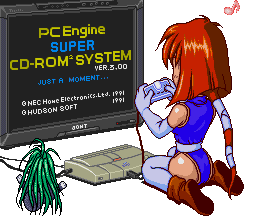A further update on my painful journey of PCE repair....
So I swapped the full chipset back into my white CoreGrafx today. Only now it's dead too
Next steps are:
a) recap everything (maybe caps died from hot air gun)
b) get a different game to try
I am worried that the Hudson ASICs are just so sensitive to anything they die with the slightest short, reverse voltage, or any similar issue. Although I'm not sure what could have killed them in the swap, everything was triple-checked and both systems are rock solid V4.9V.
The Sega ASICs, made around the same time, are much more robust it seems. It's a real bummer.
My white CoreGrafx just gives me a black screen. Continuity checked the full ribbon cable and thats fine. All pins for all chips check out under microscope and "push test" with tweezers. One pad was damaged and jumped with inductor wire, not a bigge.
What *is* a biggie is that the PCB substrate began to warp and bubble during reflow. These old 80s boards are just crap compared to the PCE GT / 90's stuff. It seriously was bowing after a single chip removal. The solder joints are all large enough that I don't believe it's what is causing the current issue though (plus I managed to minimize some of this).
Re; PC Engine GT, I removed the full chipset on Main PCB and cleaned it all. But it already looked great. Now it's a spotless mystery dead system.
Removing the volume knob is tricky btw - note there's a sorta hidden extra ground tab in the middle, so it actually has like 8 points to desolder. It's a cool design to add ground below the resistive path, but man that was annoying cause I've never seen that before.
So I swapped the full chipset back into my white CoreGrafx today. Only now it's dead too
Next steps are:
a) recap everything (maybe caps died from hot air gun)
b) get a different game to try
I am worried that the Hudson ASICs are just so sensitive to anything they die with the slightest short, reverse voltage, or any similar issue. Although I'm not sure what could have killed them in the swap, everything was triple-checked and both systems are rock solid V4.9V.
The Sega ASICs, made around the same time, are much more robust it seems. It's a real bummer.
My white CoreGrafx just gives me a black screen. Continuity checked the full ribbon cable and thats fine. All pins for all chips check out under microscope and "push test" with tweezers. One pad was damaged and jumped with inductor wire, not a bigge.
What *is* a biggie is that the PCB substrate began to warp and bubble during reflow. These old 80s boards are just crap compared to the PCE GT / 90's stuff. It seriously was bowing after a single chip removal. The solder joints are all large enough that I don't believe it's what is causing the current issue though (plus I managed to minimize some of this).
Re; PC Engine GT, I removed the full chipset on Main PCB and cleaned it all. But it already looked great. Now it's a spotless mystery dead system.
Removing the volume knob is tricky btw - note there's a sorta hidden extra ground tab in the middle, so it actually has like 8 points to desolder. It's a cool design to add ground below the resistive path, but man that was annoying cause I've never seen that before.



